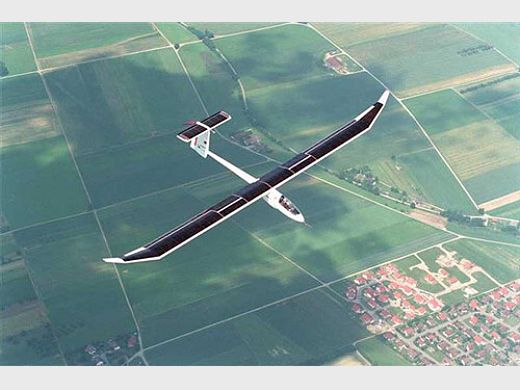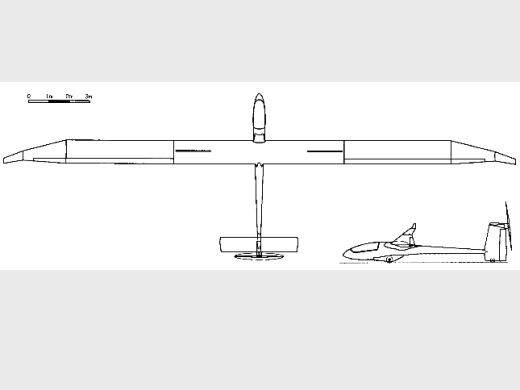
Icaré 2
| DONNÉES GÉNÉRALES |
| Année du premier vol (ou de design, si seul projet) |
1996 |
| Pays | Allemagne |
| Designer(s) | VOIT-NITSCHMANN, Rudolf & al. |
| Premier constructeur | Université de Stuttgart |
| Type d'appareil | Propulsion solaire |
| Fonction | Expérimental |
| SPÉCIFICATIONS TECHNIQUES |
| Envergure | 25 m |
| Longueur | 7.9 m |
| Hauteur | 2 m |
| Allongement | -- |
| Surface alaire | 25 m2 |
| Profil aile | -- |
| Masse à vide | 280 kg |
| Masse maxi | 380 kg |
| Charge alaire | 15 kg/m2 |
| Vitesse mini | 48 km/h |
| Vitesse maxi | 90 km/h |
| Finesse maxi | 36 à 61 km/h |
| Taux de chute mini | 0.4 m/s à 50 km/h |
| Nb sièges | 1 |
| Structure | -- |
AUTRES INFORMATIONS
| Constructeur(s) |
| ||||||
| Infos techniques | Solar energy powered sailplane. Empennage en T. The structural design of icaré 2 is a combination of CFRP (carbon) and honeycomb sandwich in all main parts of the structure, where all control surfaces and the wing lower side have been covered with fabric. max. climb rate 2 m/s best glide ratio 36 -- max. solar power 3.6 kW efficiency of solar cells 17 % battery mass 27 kg battery capacity 2.9 kWh resulting range ca. 60 km mean battery voltage 135 V max. engine power 12 kW | ||||||
| Histoire résumée | When in 1996 building a practical solar aircraft became the topic, soon a team formed around Prof. Voit-Nitschmann at the aerospace engineering at University Stuttgart, to create a regarding competition aircraft. At the same time it resulted starting from 1995 on into an opportunity for more than 40 students to develop a very special aircraft and to take it into the air. The called the project “Icaré”, a combination of the name of Icarus, the hero of the Greek mythology and Re, the Egypt sun god. After winning the Berblinger Prize in 1996, Icaré was kept in operation and improved continuously. Also after winning the first prize in Ulm, Icaré 2 was constantly improved, including even (not yet realized) concepts to get a propulsion system based on a hydrogen powered fuel cell. Already on 17. June 2003 project leader Prof. Voit-Nitschmann succeeded to fly in Germany from Aalen to Jena with a flight distance surpassing 350 km. Shortly thereafter FAI defined the international record class of "solar powered aircraft", where now world record may be established. Record pilot has done since 2010 many flights with icaré 2, which have been documented for FAI. After record pilot Klaus Ohlmann became aware of the project, he started from 2011 on to make record flights from his home airfield in Serres in the “solar powered” class and from that time on watch-manufacturer Seiko is supporting the operation and record attempts as main sponsor. | ||||||
| Liens personnalités | Pas de personnalité associée. |
SOURCES DOCUMENTAIRES
| Liens WEB | Site : La maison des bories . Texte + photo + specs. (2010-03-21 CL) Site : Flug Revue . Article (prix de la ville d'Ulm). (2010-03-21 CL) Site : Institut für Flugzeubau Stuttgart . Specs + photos + infos. (2010-03-22 CL) Site : Solarflugzeuge.de . Texte + plan 3 vues. (2010-03-22 CL) Site : Le Dauphiné . Klauss Ohlmann établit un record du monde. . (2015-03-15 CL) Site : Icaré 2 . Site officiel. (2015-03-15 CL) |
| Livres | Die schönsten Motorsegler par GASSEBNER, Bern Jürgen (2000) [p. 125-129. Texte + 6 photos + specs]. |

Team J2mcL © 2003 -
- Pages optimisées pour Mozilla Firefox

